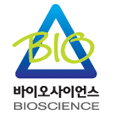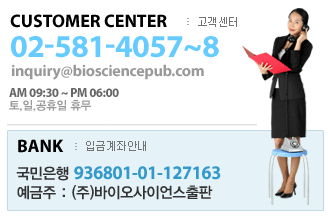This text is designed for immunlogogy course in a clinical laboratory science programs (also known as medical technology) at 2- and 4-year schools. This is a core text in the curriculum. This book is unique because of the section on molecular diagnostic technology.
(NOTE: Each chapter begins with Chapter Outline, Chapter Checklist, Case in Point, Important Terms, and Introduction and concludes with Summary, Points to Remember, Learning Assessment Questions, and References).
1. What Is Immunology?
Diane Tice
What is Immunology?
Historical Perspectives,
Early Immunology. Cowpox and Smallpox. Louis Pasteur and Immunization. Twentieth-Century Immunology. Moving Toward the Twenty-First Century.
2. Overview of the Immune System.
Connie Mahon
Innate Immunity.
Physical and Chemical Barriers. Cellular Components. Acute Phase Proteins,
Complement, and Interferons. Inflammation and Phygocytosis.
Adaptive Immunity.
Antigens and Antibodies. Humoral and Cell-Mediated Immune Responses. Major Histocompatibility Complex (MHC) Antigens. Primary versus Secondary Antibody Response.
3. Immunoglobulins.
Linda A. Smith, Michelle S. Kanuth
The Anitbody Response.
B Cell Maturation. Antigen Independent B Cell Maturation. Antigen Dependent B Cell Maturation. T Cell and B Cell Interactions.
Immunogens.
Characteristics of Immunogens.
Immunoglobulins.
Structure of the Immunoglobulin Molecule. Diversity of the Immunoglobulin Molecute. Immunoglobulin Classes.
Monoclonal Antibodies.
Characteristics of Monoclonal Antibodies.
Production of Monoclonal Antibodies.
4. Infection and Immunity: Host—Parasite Relationships.
Connie Mahon
The Role of the Usual Microbial Flora.
Composition of the Microbial Flora. Factors that Determine the Composition of the Usual Microbial Flora. Role of the Usual Microbial Flora in the
Pathogenesis of Infectious Disease. Role of the Usual Microbial Flora in the Host Defense against Infectious Disease.
Mircrobial Factors Contributing to Pathogenesis
and Virulence.
What Determines Microbial Virulence.
The Host Defense against Microbial Invasion.
First-Line Defenses. Second-Line Defenses. Mechanisms by which Microbes May Overcome the Host Defenses.
5. The Complement System.
Linda Smith, Michelle Kanuth
The Complement Pathways.
Classical Pathway. Alternate Pathway. Biological Activities of Complement. Complement Regulatory Proteins. Complement Receptors.
Disorders of Complement Function.
Complement and Microbial Organisms. Diseases Linked to Complement Deficiencies.
Detection of Complement.
Addressing Immune Deficiencies.Diagnostic Testing that Relies on Complement.
6. Hypersensitivity.
Linda Miller
Types of Hypersensitivity.
Type I Hypersensitivity: Anaphylactic Hypersensitivity.
Type II Hypersensitivity: Antibody-Dependent
Cytotoxic Hypersensitivity. Type III
Hypersensitivity: Immune Complex-Mediated
Hypersensitivity. Type IV Hypersensitivity:
Cell-Mediated or Delayed Hypersensitivity.
7. Immunologic Detection of Infectious Diseases.
Colonel David W. Craft
Principles of Immunological Detection Methods.
Manual Methods of Detection.
Automated Platforms.
Immunologic Detection of Bacterial Infections.
Whooping Cough (Pertussis). Legionnaires’ Disease. Bacterial Meningitis and Sepsis. Gastroenteritis. Nontreponemal Tests for Syphilis. Treponemal Tests for Syphilis.
Immunologic Detection of Viral Infections.
Gastroenteritis. Blood-Borne and Body Fluid- Borne Diseases.
Immunologic Detection of Fungal and Parasitic Infection.
Pneumonia in Immunocompromised Patients. Cryptococcal Meningitis. Giardiasis and
Cryptosporidiosis.
Future Trends.
Verification and Validation of Testing Methods.
Regulatory Requirements. Statistical Analysis. Adopting a Serological Test for Use in the Clinical Laboratory.
8. Autoimmune Diseases and Immunodeficiency Disorders.
Linda A. Smith, Michelle S. Kanuth
Autoimmune Diseases.
Definition of Autoimmunity. Normal Role of Autoantibodies. Development of Central and Peripheral Tolerance.
Classification of Autoimmune Diseases.
Organ-Specific Autoimmune Diseases. Systemic Autoimmune Diseases.
Primary Immunodeficiency Disorders.
Definition and Diagnosis of Immunodeficiencies. SCID: Severe B and T Cell Deficiencies. T Cell Activation Deficiencies. MHC Deficiencies. Deficient Immunoglobulin Production. Other Immunodeficiencies. Disorders of Phagocytes. Complement Deficiencies.
Secondary Immunodeficiencies.
Immunodeficiencies Due to Nutritional Deficits, Tumor, or Immunosuppression. HIV-Induced Immunodeficiency.
9. Transplant Immunology.
Evan F. Ray, Patricia Reilly
The Major Histocompatibility Complex.
Historical Background. Organization of the Human MHC on Chromosome 6. Inheritance/ Haplotypes. nheritance/Disequilibrium.
Class I MHC. Class II MHC. Class III MHC. The Immune Response. Nomenclature.
Clinical Applications.
HLA and Transplantation. Solid Organ Transplantation. Progenitor Cell Transplantation. HLA and Disease Association.
10. Tumor Immunology.
Kent J. Weinhold
Causes of Tumor Formation.
Neoplasm, Carcinoma, and Sarcoma. Environmental Factors. Physical Factors.
Genetic Predisposition. Hormonal Factors. Viral Origin.
Identification of Tumors.
Identification and Characterization of Human TAA. MART.
Immune Response to Human Tumors.
Mechanisms of Tumor Escape.
Immunotherapy and Tumor Vaccines.
Clinical Staging in the Standard Care of Treatment. Immunotherapeutic Strategies. Passive Cellular Immunotherapy.
11. Clinical Applications of Flow Cytometry.
John Schmitz
Basic Principles of Flow Cytometry.
Flow Cytometry Instrumentation. Cellular Probes. Monoclonal Antibodies. Sample Processing. Specimen Types for Flow Cytometry Analysis.
Clinical Applications of Flow Cytometry.
Enumeration of CD4 T-Lymphocytes in Peripheral Blood. Enumeration of Fetal Hemoglobin Containing Cells. Flow Cytometry in Transplantation. Applications of Flow Cytometry in Hematology. Flow Cytometry in Hematopathology.
Future Trends in Flow Cytometry.
12. Hybridization Techniques.
Diana Tice
Basic Molecular Biology.
History. Structure and Function of DNA.Structure and Function of RNA. The Universal Genetic Code. Transcription, Translation, and Replication. Differences between Prokaryotic and Eukaryotic DNA.
Purification and Analysis of Nucleic Acids.
DNA Purification and Quantitation. mRNA Purification and Quantitation. Restriction Enzymes and Their Uses. DNA Sequencing.
Hybridization Techniques.
Overview of Hybridization and Basic Blotting Techniques. In Situ Hybridization.
Applications of Hybridization Techniques in Immunology.
Clinical Immunology and Microbial Immunology. Research Application.
13. Amplification Techniques.
Steven Mahlen
Amplification Technology: An Overview.
Polymerase Chain Reaction. Reverse Transcriptase PCR (RT-PCR). Ligase Chain Reaction. Nucleic Acid Sequence Based Amplification. Branched DNA Detection. In Situ Amplification.
Future Trends in Molecular Immunology.
Gene Chip Technology.
14. Molecular Applications in Cytogenetics.
Betty Dunn
Classical Cytogenetics.
Cell Cultures and Harvesting. Enzyme Treatment and Staining. Counting Chromosomes in Cells. Computer Imaging. Case Reports. Advantages and Limitations.
Fluorescent In Situ Hybridization (FISH).
History. Theory. Procedure. Hybridization to Target.
Clinical Applications.
Contiguous Gene Syndromes (Microdeletions and Microduplications). Prenatal Diagnosis.Acquired Abnormalities. Research Applications.
Advantages and Limitations of the FISH Procedure.
Advantages. Limitations.
Advanced Applications.
Whole Chromosome Paints. All-Telomere FISH. Multicolor FISH. Spectral Karyotyping. Color Banding or RX-FISH.Comparative Genome Hybridization. Microarrays.
15. Histocompatibility Laboratory Techniques and Applications.
Evan F. Ray, Patricia Reilly
Historical Overview.
Serological Techniques.
Specimen Collection, Transportation, and Storage. Lymphocyte Preparation. HLA Testing: Complement Dependent Cytotoxicity Assay. Flow Cytometry.
Cellular Techniques.
One Way Mixed Lymphocyte Reaction/Mixed Lymphocyte
Culture.
Molecular Techniques in HLA.
Advantages of DNA-Based Testing. Specimen Collection and DNA Extraction. Polymerase Chain Reaction. PCR-Sequence Specific Oligonucleotide Premers. PCR-Sequence Specifc Oligonucleotide Probes. Sequence Based Typing. Short Tandem Repeat Testing to Determine Bone Marrow Engraftment.
HLA Laboratories.
Types of HLA Laboratories.
Accreditation/Regulatory Agencies. Personnel. Quality Assurance/Quality Control.
GLOSSARY.
ANSWERS TO LEARNING ASSESSMENT.
QUESTIONS.
INDEX




